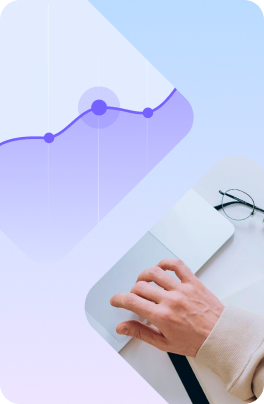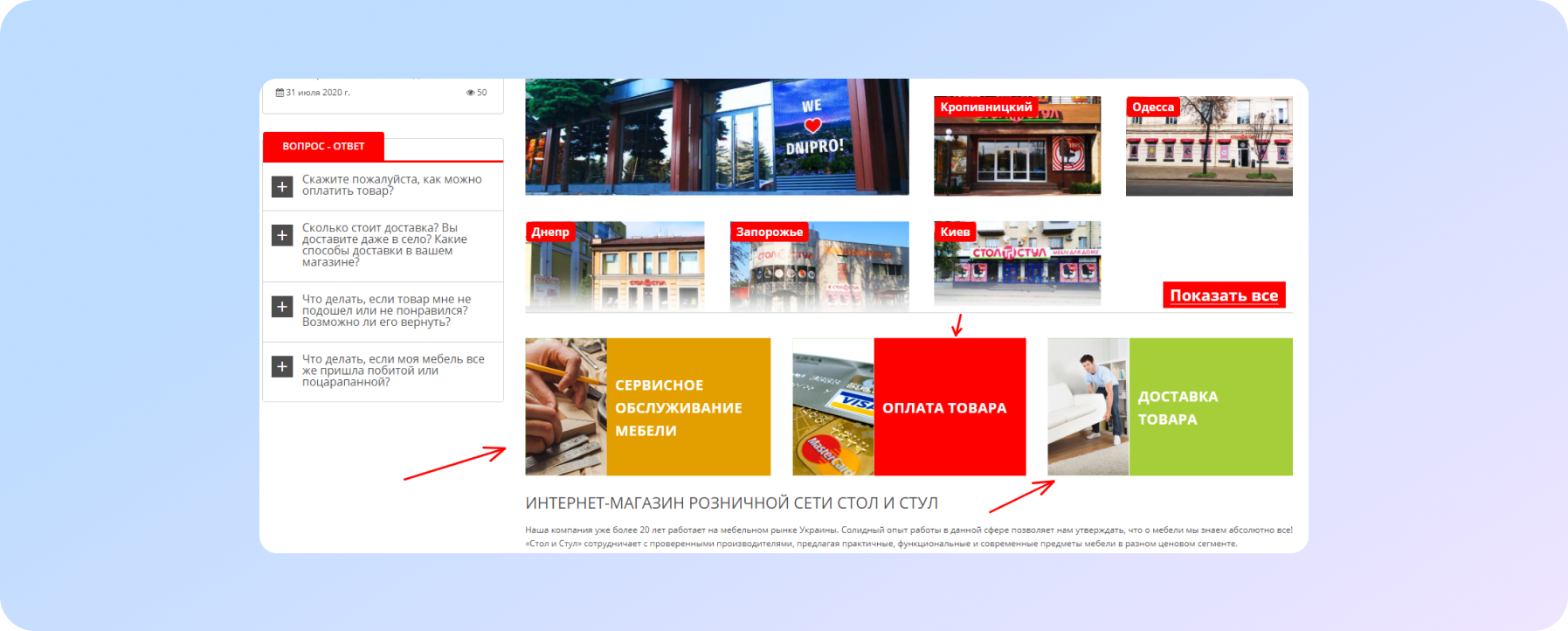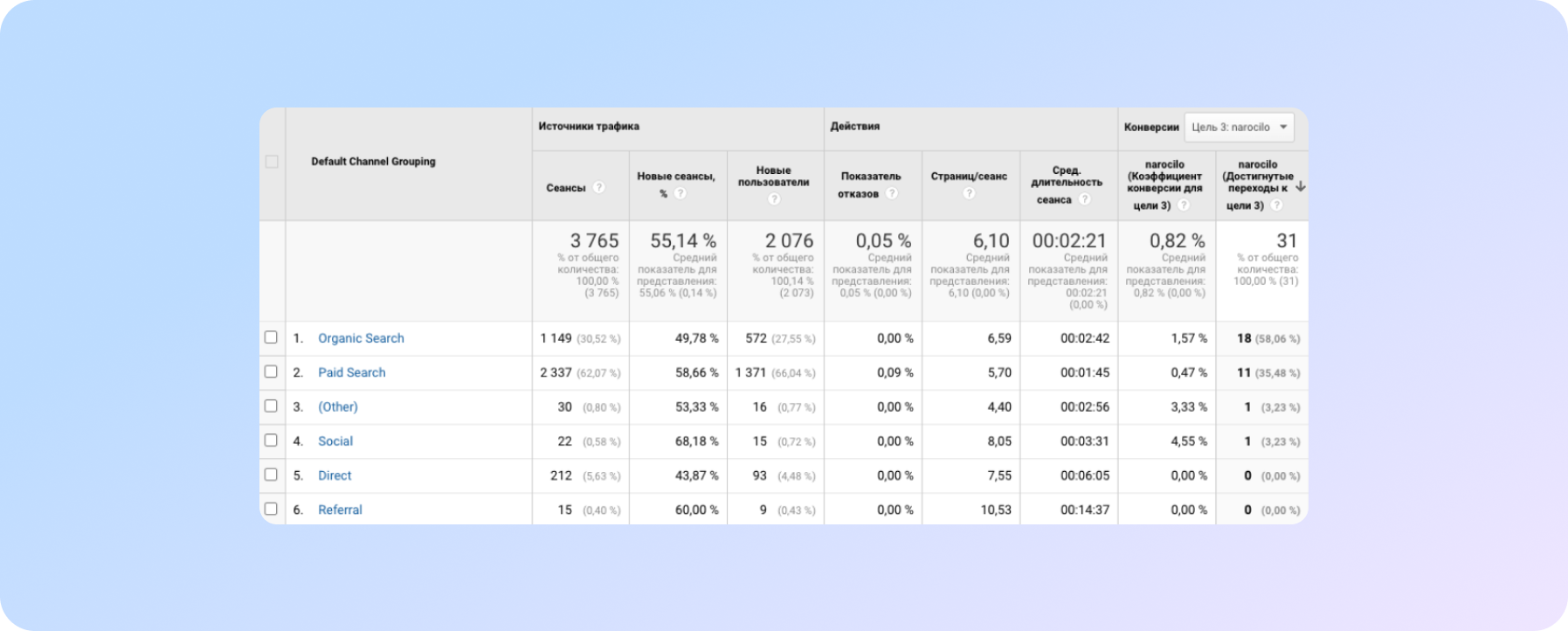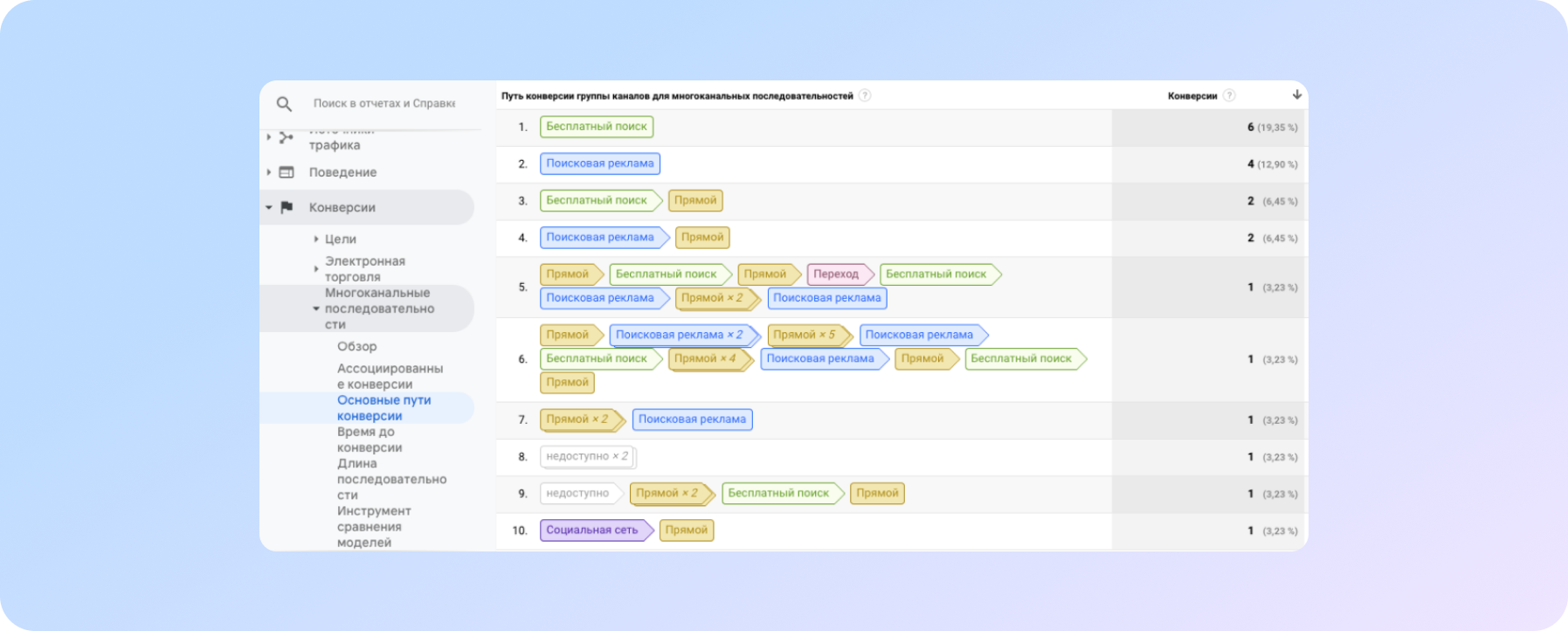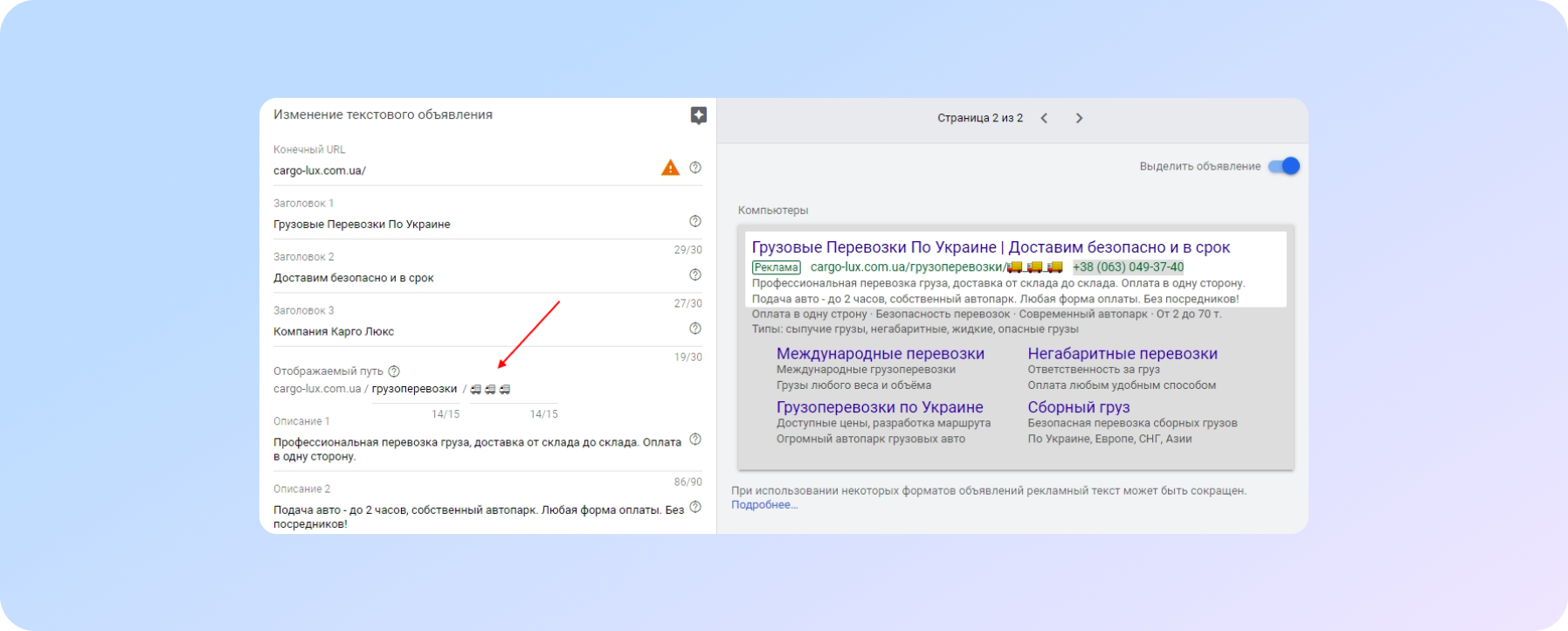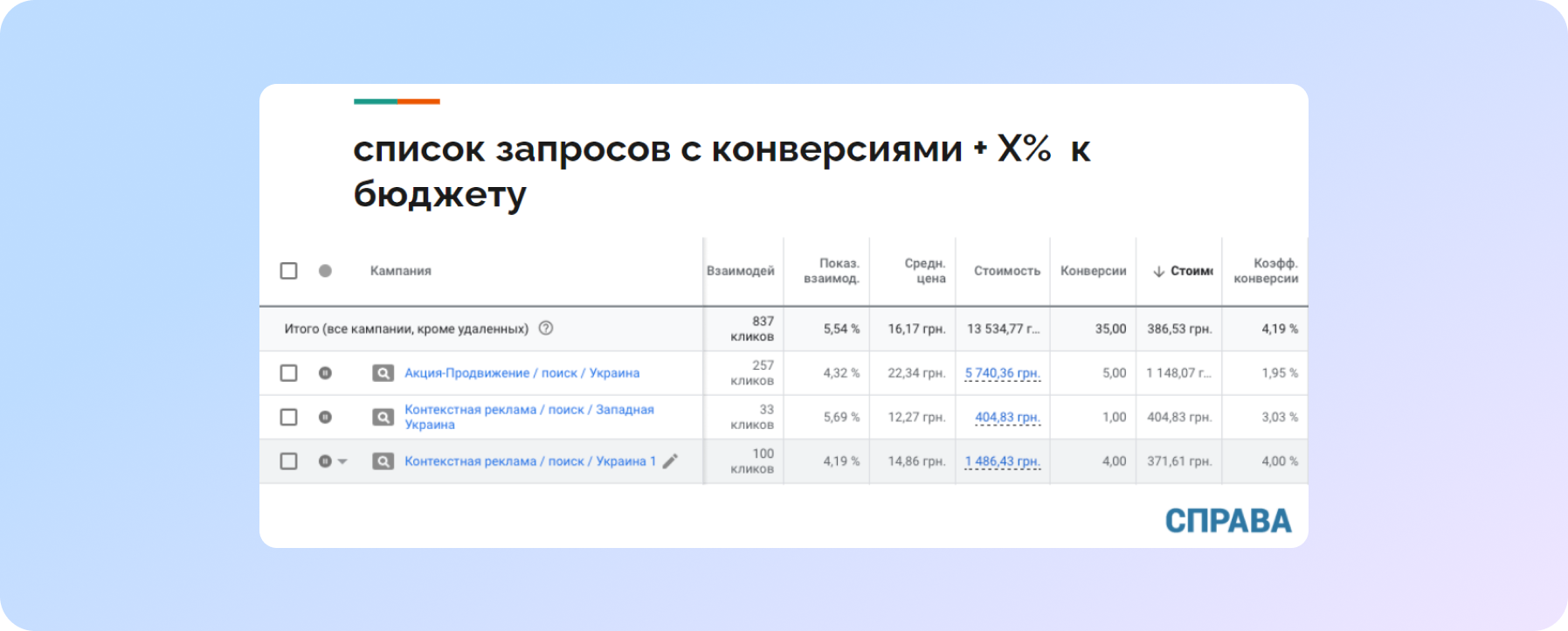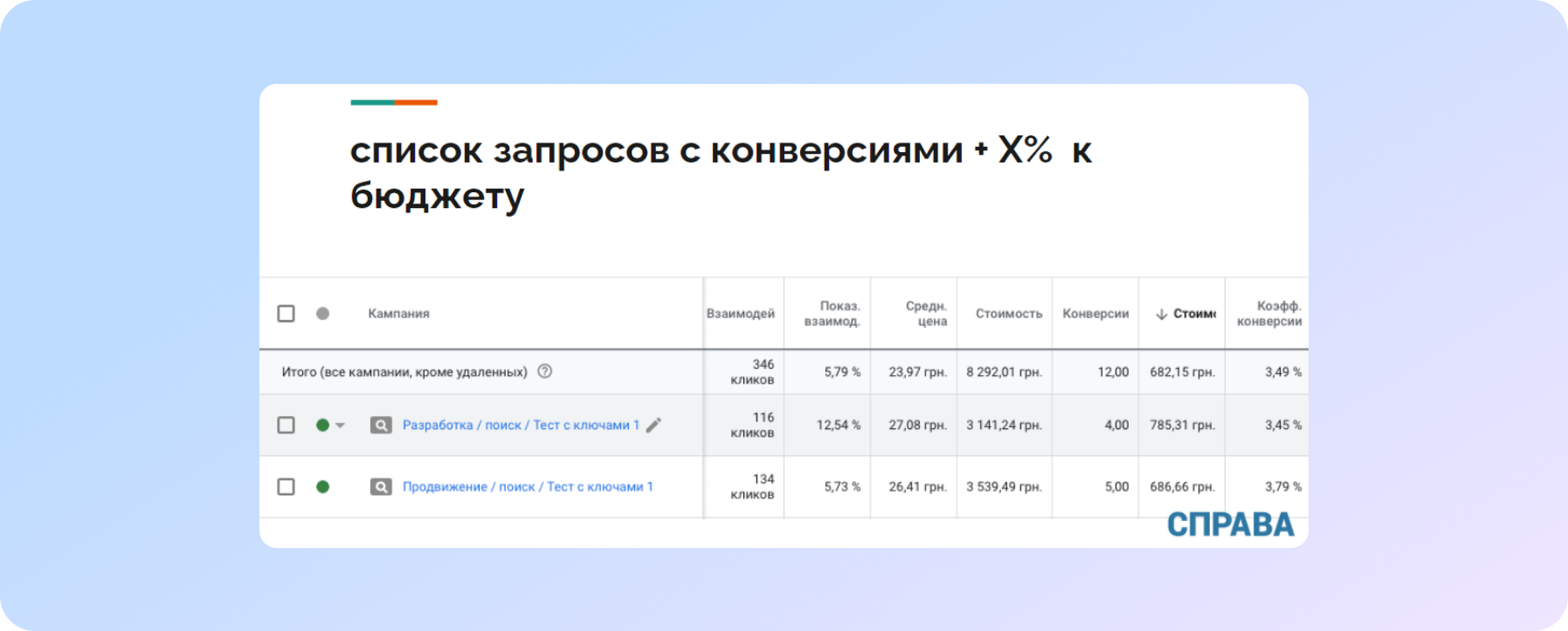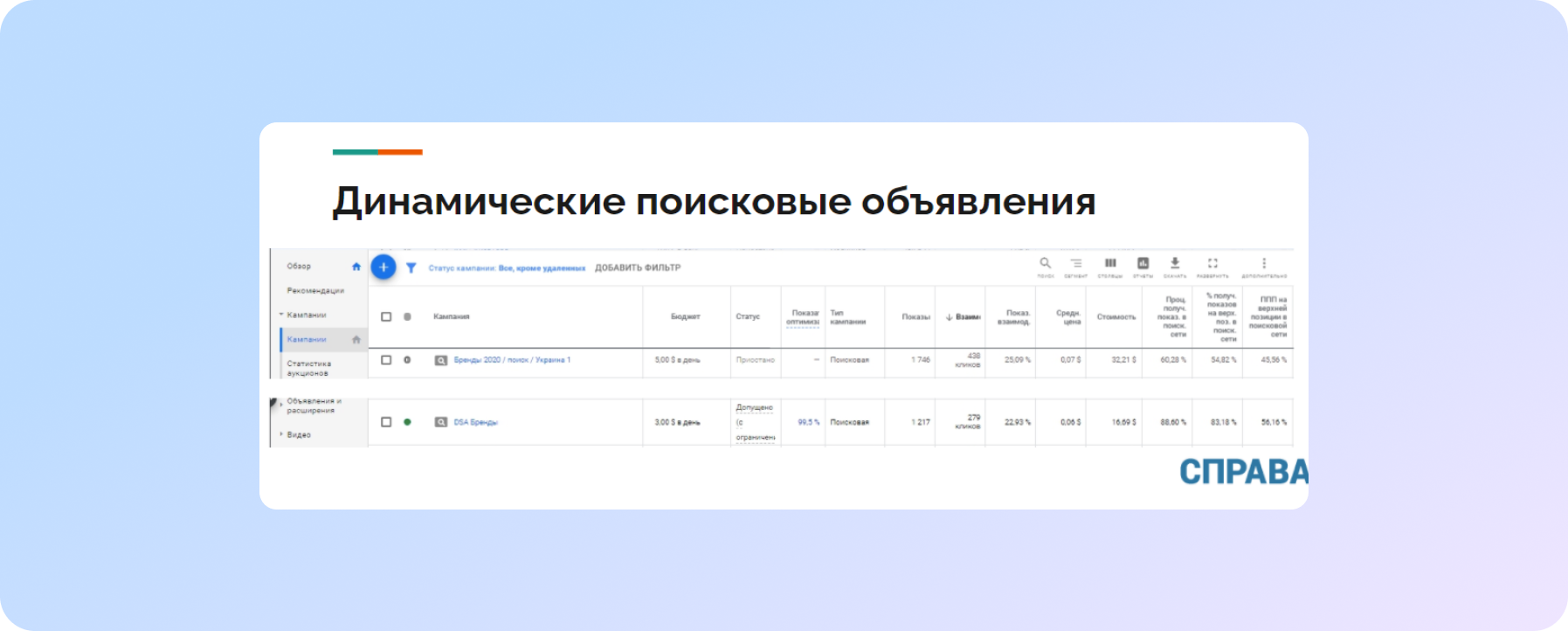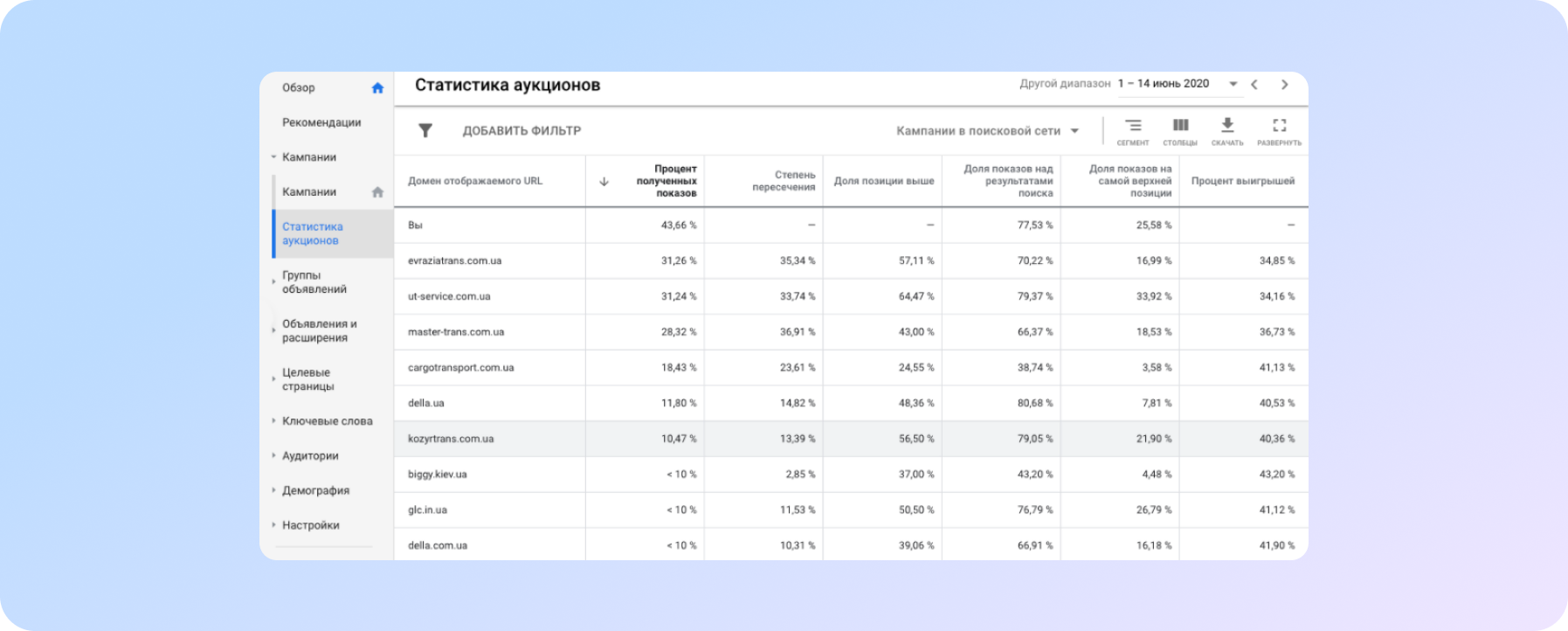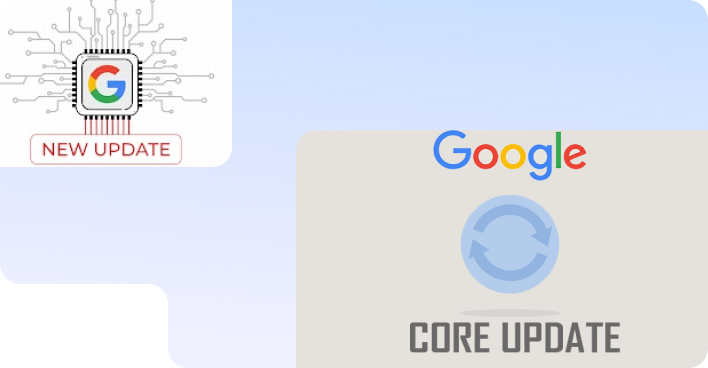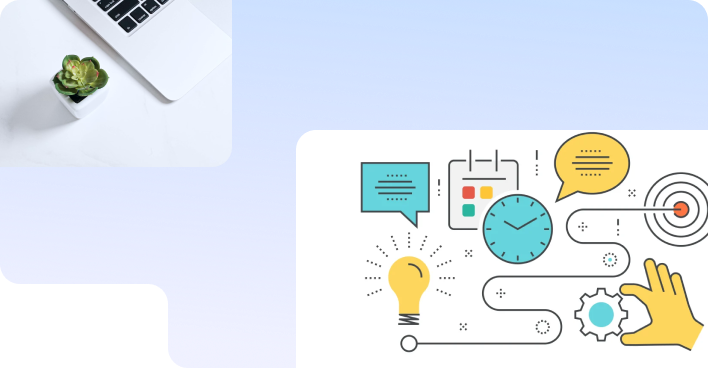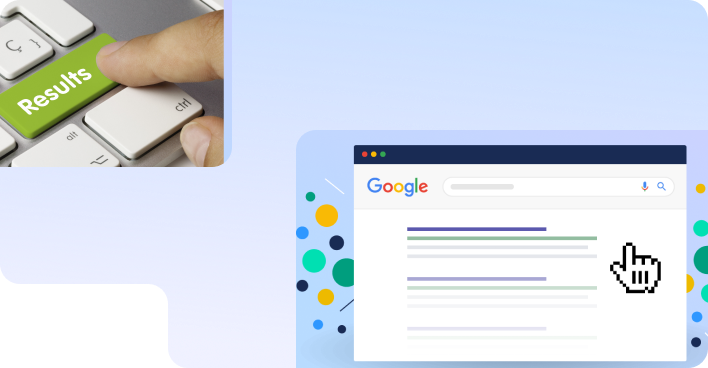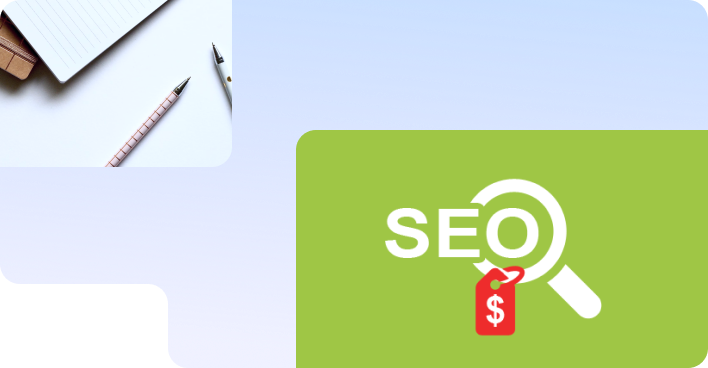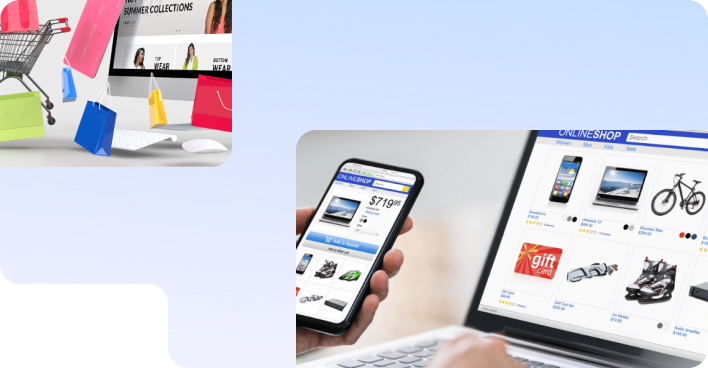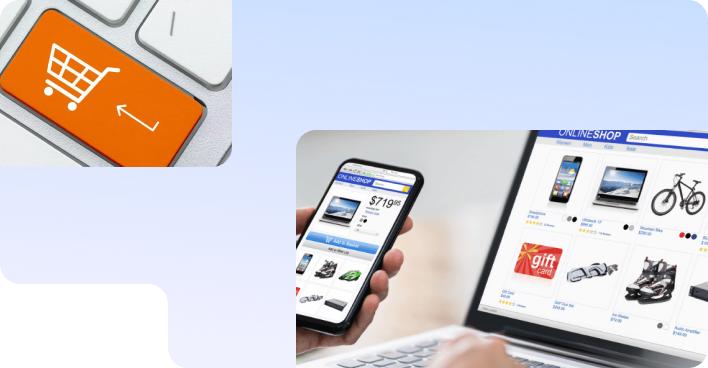No magic - just our painstaking joint work on the site
Life hacks to increase conversion when working with Google Ads
Editorial note: Natalia Protsiuk, CEO of SPRAVA. held a webinar for the WebPromoExperts academy. We present you a text transcript of her report - theses, tips, tricks.
Who it is useful for: customers of contextual advertising - so that you understand how a specialist reduces the cost of a click and a transition. Contextual advertising specialists - in order to implement and enjoy the savings. Marketers who are responsible for promoting the project - to see their mistakes and growth areas.
How to get more financial returns without additional effort
The marketer in the project must play an active role at all stages of work with contextual advertising. Not only approve the strategy and the semantics of ads proposed by the contextual advertising specialist, but also participate in increasing the financial gain.
In an ideal world, a marketer/customer who wants to generate sales through contextual advertising:
- finds a contractor (agency, freelancer);
- fills out the brief (on his own or with an account manager);
- approves the media plan;
- talks about business processes;
- provides a cool site with ideal landing page for work;
- looks at the report at the end of the month.
In real life, customers come to the agency and say: “We want context advertising, we are ready for sales, we have a website, here is the money - do it!”. And then it all depends on your luck...
Life hack #1. How to prepare landing pages for contextual advertising
The first thing that those on whom the effectiveness of contextual advertising depends on can do:
- check the landing pages on the site where you are offered to work. And here we can either agree to work with the project that we were given, or comment and give our recommendations on what needs to be improved, or refuse.
I know a number of specialists who always refuse to work with low-quality landing pages. Sometimes sites do have almost everything that a potential buyer needs. But! In about a one third of cases, the landing page looks exactly like in the screenshot.
Everything is mixed up, the information is presented in an incomprehensible way. And here is what I suggest you do. Open the landing page and checkб what should be there.
What should be on landing page:
- Clear USP in accordance with the search query;
- Price;
- What is included in the price, how to pay;
- Benefits of working with you;
- Reviews;
- Trust block;
The trust block includes certificates, information about your management, real address, photos of a real offline store
And what else to do with the landing? Let's do an experiment. Drive the query "office furniture in Odessa" into the search box. And you will see which pages your PPC peers are currently leading potential buyers to.
How can we use competitor sites? We open a competitor's landing page, conduct a brief audit: what helps to sell on this page? Maybe our page lacks something from this list? If possible, add this information to your landing page. It could be, for example:
- benefits of shopping in this store;
- Q&A corner;
- delivery terms;
- guarantees, loyalty programs.
Here they are - these blocks on the start page
In addition, on the left in the screenshot there is a Q&A block that allows a potential buyer to get an impression of this online store.
As an SEO company that has a website development department, I can say that the cost and time of adding these two blocks to the start page will most likely (depending on the admin panel) be from 30 minutes to 1 hour of programmer time. But if we show this information on the landing page where we bring potential buyers, then the number of hits from this page will increase.
This is clear to everyone, obviously. But often this is missed.
When you work with sites, see what answers would be important to you. And are these answers on the landing pages. Inventing something new is not always necessary. It is possible that such blocks are already provided by the developers on the site, they already exist, the developers just did not display them on your landing page.
With us, these issues are solved more simply: due to the fact that we have our own development department, we ourselves carry out such work and bring the landing page to the required content.
Another important nuance. For some reason, everyone (this is more about customers) thinks that if we bring a person to the site through the context, then he will make decisions already on the site. It doesn’t work like that. People open several sites, compare your offer with the offer of your competitors. Therefore, in this comparison, you should be better.
It is necessary to give completeness of the answer to all potential questions. The visitor wants to immediately understand what he will get when working with you, how the payment and delivery will take place, and how he can return the goods to you if he is not satisfied with it.
Do you want a complete checklist for checking the landing page for an online store? Sign up for our helpful marketing newsletter and we'll send it to you. We write rarely - once every two weeks. But aptly - only about the useful and necessary.
Life hack #2. Squeeze analytics dry: increase financial returns
Now let's look at the data we collect.
Let's make a reservation right away that for effective work, you must have Analytics installed, and all conversion actions on the site have to be tracked: calls, requests, chat requests. In addition, conversions have to be displayed in the Google ADS account.
What metrics do we analyze?
- Conversions by source
- Goal Location Conversions
- Main Conversion Paths
- Consider how data changes when the attribution model changes
- Bounce rate
In total, for correct work with the context, we have the following data:
- How many incoming hits we received from contextual advertising (conversion accounting in Analytics must be set up for this).
- We understand on which pages conversion actions were performed.
- We can track which channels were involved in achieving this particular conversion, how many times and on which resources the user interacted with the site before actually sending the application (or before making a call).
- We take into account how the source with the most leads changes when the attribution model changes.
I'll show you more:
Screenshot of Analytics. Here the conversion is sending an order from the site. It can be seen that we have two main channels for obtaining leads: organic and Google Ads. According to Analytics for the week, there were 11 requests sent from Google ADS and 18 from organic. At first glance, it is clear that there are more hits from organic, but what we see in this particular Analytics report is not always the full picture. To read this data correctly, it is very important to understand what your attribution model is and what the conversion path is for the goal we are tracking.
Since the attribution model determines which channel you consider the most converting, you or the one who decides what to do next may have a wrong idea about the effectiveness or ineffectiveness of contextual advertising.
Therefore, we pay attention to the report "Main conversion paths". It can be seen here that the first point of contact with us is not always organic. Search advertising is involved in most of the chains, and by scaling the number of such clicks, we can increase the volume of incoming hits from the site.
Another common mistake. If we pay attention only to the last touch, we often see the next picture: most of the goals are achieved by visitors who came to the site directly, through the domain. If you dig deeper, you will see that most of these conversion chains started through context or organic search, and ended with a direct transition.
Accordingly, by reducing or increasing organic traffic or traffic from the context, we influence the total number of goals achieved.
Life hack #3. Completeness of the ad and visual perception: how to refine the ad to the ideal
According to the experience of our audits, which we conduct from time to time, about one third of all companies have incomplete ads. Some of the information you can submit as part of a Google Ads ad is simply skipped.
Completeness of ads and visual perception
- ads
- Heading 1
- Heading 2
- Heading 3
- Description 1
- Description 2
- Displayed path (path 1, path 2)
- Ad extensions
- Quick links
- Quick links description
- Clarification
- Phone number
- Structured Description
- Prices
All of these fields in your ads must be filled. Pay special attention to headings, display path and sitelinks, as these blocks visually stand out and attract the user's attention more.
I'll tell you about one small nuance that we paid attention to about 10 months ago. And this allowed us to significantly increase CTR (and reduce the cost of a click, which means that within the same budget, get more sales).
We began to display emoji in the url for our customers' ads, and it worked perfectly.
At the moment, Google only skips certain characters, but they are enough to work with most topics. We highly recommend doing this before everyone else does it. You will see that you will be selected more often in the search.
What else can be done?
- Use the third heading in your ad. Write something useful there, but not the most important thing.
- Put emoji in the displayed path.
- Quick Links. Very often, something secondary is put to quick links. I recommend treating quick links equally with the title. This is what is highlighted, this is what visitors see first. And if you place the most important information here, then it is more likely that a potential buyer will pay attention to it.
Life hack #4. Redistribution of the AC budget on individual requests
This is a screenshot of an ad campaign we ran for ourselves. It was in the midst of quarantine, when we wanted to see if requests for going online would grow. We collected semantics for promotion and contextual advertising, and we got a fairly high cost per conversion - UAH 1,150. This is quite a lot, despite the fact that the niche is not heated, but boiling.
There’s no magic in the next steps. You launch AC (ad campaign), collect as much semantics as possible, and these companies will be working for you for some time. (Required condition: you have conversions that are of interest to you in the first place displayed in your account). After these campaigns have worked, you select the search queries used in conversions. For example, you had 500 search queries, then you cut them off, and you have 50.
The first step is to select these queries for which potential buyers come to us. We display them in separate campaigns, for these campaigns we increase the budget. Here it is up to you - you can simply increase the budget, or you can redistribute the budget due to queries for which there are no conversions. Here's what we got again in a week.
Our promotional conversion cost was UAH 1,200 per one conversion, in April it turned out to be 680 UAH. Consider that the cost has been halved with the same heated competition. In addition, we have not only reduced the price - the conversion rate has increased, the CTR has increased.
Queries that bring the most conversion should use the main AC budget. This is how you can contribute to the financial effectiveness of advertising.
Also, pay attention to the time when the conversion action takes place. For example, in the morning they come to you and just look at the information. But from 16:00 to 18:00 you get the traffic that you need, which buys from you. Adjust the AC budget over time as well.
Life hack #5: Working with dynamic search ads
Dynamic search campaigns or dynamic search ads (DSA) is when the system compares the user's search query and the content on the site. If they are relevant, then your ad is shown to that visitor.
Optimize your site (or landing page) for the queries that you are targeting, then you can use dynamic search ads. Such advertising can be used when the topic is not entirely clear or when the semantics have been collected, but there are very few transitions and it is difficult to get into the audience that will be converted on this site.
What should be on the site in order for it to work well?
- Hierarchical structure of the site.
- The site must be in the index.
- Search engine optimization of either the entire site or only the landing page we need is desirable.
Google needs to understand who the site is actually targeting, who you want to attract, who you want to sell to. I’ll show you the difference for one of our projects, specifically for dynamic ads.
We collected semantics by brands. This is a niche store, and there is practically no semantics there, there are no competitors. Traffic according to the collected semantics was small and converted very low. As an experiment, dynamic ads were launched. As a result, we received virtually the same amount of traffic, but this traffic began to convert. It is important to note here that the site was previously optimized.
So, if you have non-obvious semantics, you collected it, started working on it and it doesn’t convert for you, but organic search converts well - try dynamic ads, they can work.
Life hack #6. Geography: ads in a specific region
You can try to build a campaign in a narrow region. Set up a campaign there, achieve a high CTR and then add new regions to the same campaign that you also need. Thus, we can get a lower cost per click than if they were initially shown in all target regions. Try this method, it also works quite well from time to time.
Life hack #7. Working with auction statistics in Google Ads
In the Google Ads account there is such a section as "auction":
Business field - cargo transportation in Ukraine and in Europe
When we go to the auction statistics, we see:
- Who are our competitors (competing with us for the same audience).
- How strongly the semantics overlap (second column).
- Higher Share is how often our ad appears above the ads on a particular site.
- Share of impressions above search results - here, for example, in 77% of cases we were shown above search results.
- Winning percentage - how often we were chosen from the proposed number of ads.
What can we do here?
- Parse the semantics of our competitors via Ahrefs Serpstat. Expand your campaigns using collected semantics
- Through the same services, we can see why they do not choose us (these tools allow you to see what advertisements look like). What does our competitor have in the ad that we don't. It is clear that if they wrote a “20-year warranty”, and you can only give a year, nothing can be done about it. But usually you can get some insights.
- If you are looking at your competitors in the SERP, pay attention to the second or third ad. Usually here are those ads that have the highest CTR. Analyze how these ads are built, what is displayed in the headline, what is shown in quick links, what add-ons your competitors have and you don't.
Such an analysis will allow you to get closer to the ideal when setting up contextual advertising in Google Ads.
You can always make your campaigns better. If you need help with contextual advertising, then welcome.
We care about improving your sales :)

